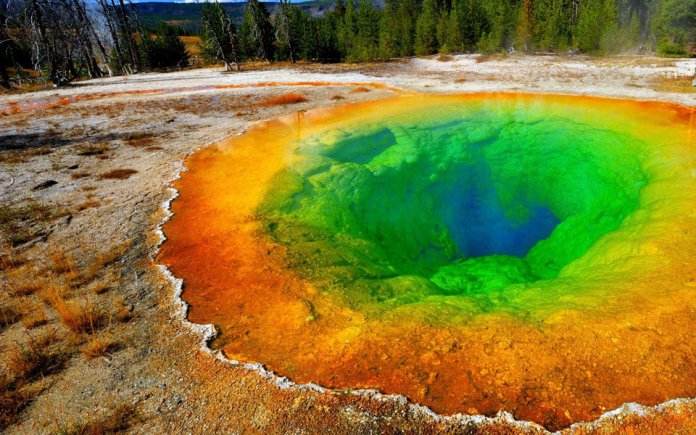The view of a calm lake or river is pleasant for many people. Someone, looking at the smooth surface of the water, dreams of fishing, someone about boating or just a relaxing holiday near the shore. However, there are lakes, rivers and lagoons, which are dangerous to dive into. Reasons for their danger include industrial pollution, human waste, bacterial growth, and even the whims of Mother Nature.
Here are the top 7 most toxic bodies of water on Earth.
7. Blue Lagoon
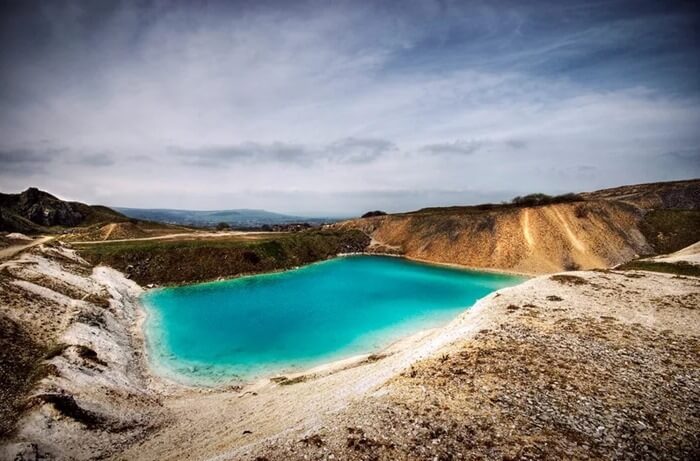 This "lagoon" in Buxton, England is actually an abandoned quarry that has been flooded and has become a popular swimming destination. People are attracted by the beautiful color of the water. But in reality, blue water is extremely toxic. Its turquoise color is due to the leaching of chemicals from limestone into the water. Calcium oxide, used as part of the quarrying process, gives the lagoon a pH of 11.3, roughly comparable to ammonia. Because of this, people who venture into the Blue Lagoon can suffer from skin and eye irritation, stomach problems, fungal infections, and rashes.
This "lagoon" in Buxton, England is actually an abandoned quarry that has been flooded and has become a popular swimming destination. People are attracted by the beautiful color of the water. But in reality, blue water is extremely toxic. Its turquoise color is due to the leaching of chemicals from limestone into the water. Calcium oxide, used as part of the quarrying process, gives the lagoon a pH of 11.3, roughly comparable to ammonia. Because of this, people who venture into the Blue Lagoon can suffer from skin and eye irritation, stomach problems, fungal infections, and rashes.
One of the warning signs placed near the lagoon reads “Contains car debris, dead animal parts, excrement, debris.” Despite warnings about toxicity and unsanitary conditions, families continue to flock to the Blue Lagoon. In June 2013, the city council decided to paint the lagoon's waters black to keep unwary swimmers out of the water. But by 2015, the water had returned to its turquoise color.
6. Titicaca
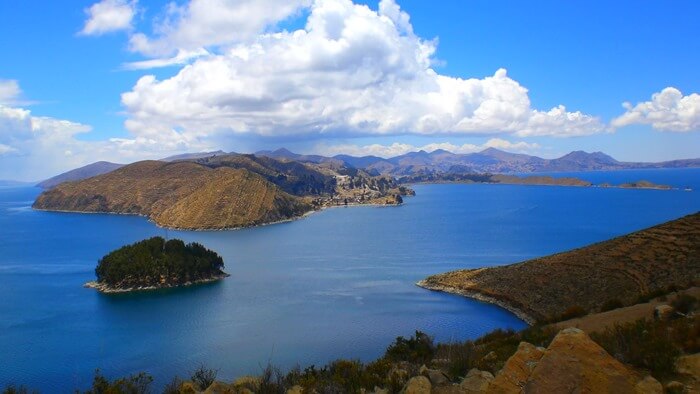 In sixth place in the top 7 most ecologically dangerous rivers and lakes in the world is the largest lake in South America, located between Peru and Bolivia.
In sixth place in the top 7 most ecologically dangerous rivers and lakes in the world is the largest lake in South America, located between Peru and Bolivia.
Titicaca was once one of the most sacred places for the Incas, who considered it to be the birthplace of the Sun. But modern people treat the lake without the slightest respect and many factories dump production waste into it. Because of this, the water is full of heavy metals such as lead and arsenic. In addition, more than half of the people living on the shores of Lake Titicaca do not have running water.
In 2015, 10,000 dead Titicacus whistlers, an endangered frog, were found on the banks of the Titicaca. The reason for the mass death of these amphibians is considered to be sewage and heavy metals that pollute the lake.
5. Pinto Lake
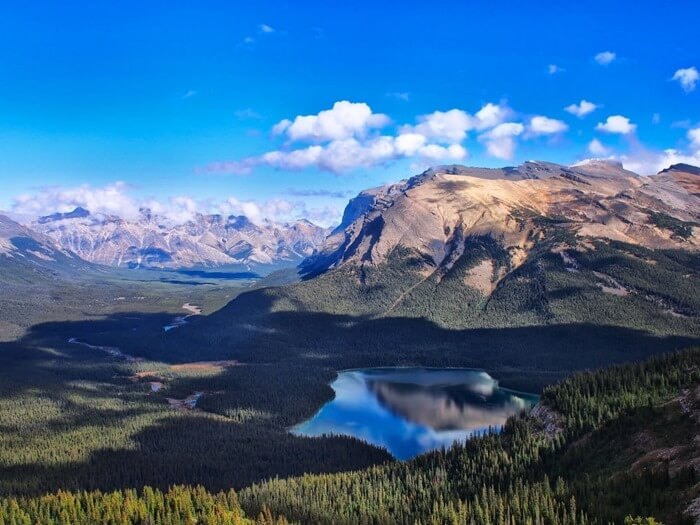 Lake California is known as the most toxic lake in the United States due to the abundance of blue-green algae - cyanobacteria that feed on nitrogen and phosphorus. These chemical elements exist in sediments at the bottom of Lake Pinto. Blue-green algae produce a toxin called microcystin. Touching or swallowing microcystin can cause nausea, fever, and even liver failure. The toxin has been linked to the deaths of birds, fish, sea otters, and dogs in the area. Therefore, any direct contact with water is dangerous, and fish caught in Pinto Lake should not be eaten.
Lake California is known as the most toxic lake in the United States due to the abundance of blue-green algae - cyanobacteria that feed on nitrogen and phosphorus. These chemical elements exist in sediments at the bottom of Lake Pinto. Blue-green algae produce a toxin called microcystin. Touching or swallowing microcystin can cause nausea, fever, and even liver failure. The toxin has been linked to the deaths of birds, fish, sea otters, and dogs in the area. Therefore, any direct contact with water is dangerous, and fish caught in Pinto Lake should not be eaten.
4. Buriganga
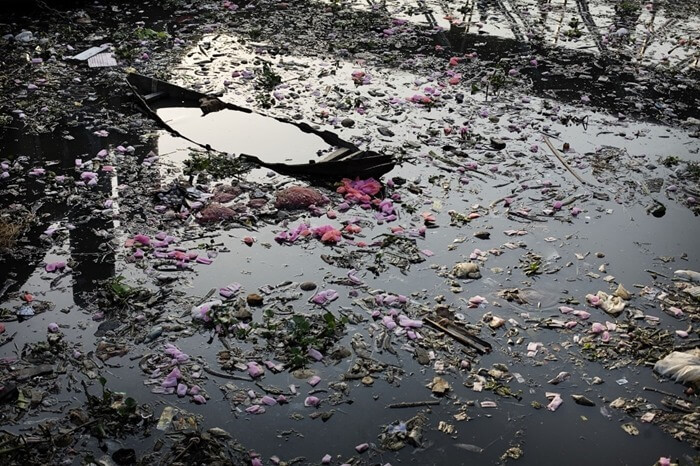 The fourth most polluted rivers and lakes on Earth is the river in Bangladesh, which is the main source of water for the country's capital, Dhaka.It is also a major waste dump for many local tanneries. Every day, these enterprises dump approximately 22,000 liters of toxic waste into the river.
The fourth most polluted rivers and lakes on Earth is the river in Bangladesh, which is the main source of water for the country's capital, Dhaka.It is also a major waste dump for many local tanneries. Every day, these enterprises dump approximately 22,000 liters of toxic waste into the river.
Leather waste contains animal meat and hair, as well as numerous chemicals, dyes, oils and heavy metals. However, slum dwellers in Dhaka have little choice and use the river water for bathing, cooking and even drinking. The result is health problems such as headaches, diarrhea, and jaundice.
3. Yamuna River
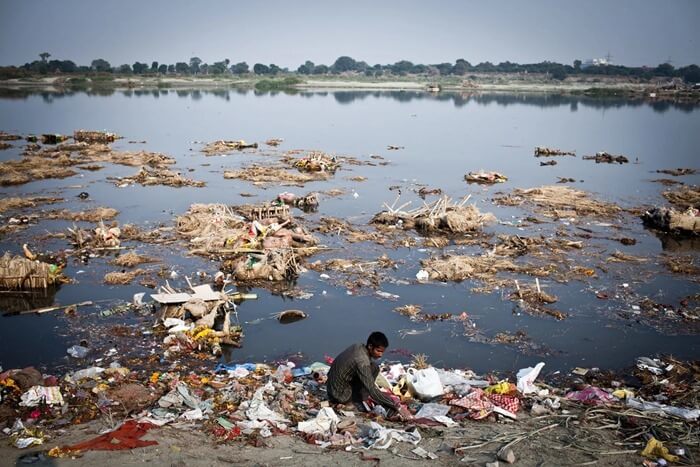 Part of the Yamuna River is crystal clear as it originates from a glacier in the Himalayas. North of Delhi, the river is home to turtles, crocodiles, many species of fish and numerous aquatic plants. But if you look at the Yamuna, which flows through the city, then the river is simply unrecognizable.
Part of the Yamuna River is crystal clear as it originates from a glacier in the Himalayas. North of Delhi, the river is home to turtles, crocodiles, many species of fish and numerous aquatic plants. But if you look at the Yamuna, which flows through the city, then the river is simply unrecognizable.
Data from a 2011 water quality report showed that the water leaving Delhi contained more than one billion faecal coliform bacteria per 100 milliliters. The standard for bathing is 500 coliform bacteria per 100 milliliters.
More than five million Delhi residents live in illegal settlements with no sewer services. They defecate in places that drain directly into the river. Industrial waste containing heavy metals and other pollutants is discharged into the river every day. In Hinduism, the Yamuna is not just a river, but a goddess. And the sad state of Yamuna worries some believers, who say that the goddess is dying and needs help. Others argue that since the river is a goddess, it can never be polluted, despite its appearance and smell.
It could be debated whether the goddess dies or not, but there is ample evidence that the river harms mortal beings. Its dirty waters are responsible for numerous cases of typhoid fever as well as an unusually high infant mortality rate. Heavy metals in the water leach out in local fields and contaminate vegetables. As a result, children in the area suffer and even die from arsenic and lead poisoning.
Interesting fact: In March 2017, the Ganges and Yamuna were recognized as living beings with legal rights, according to the decision of the court of the Indian state of Uttarkhand.
2. Matanza or Riachuelo
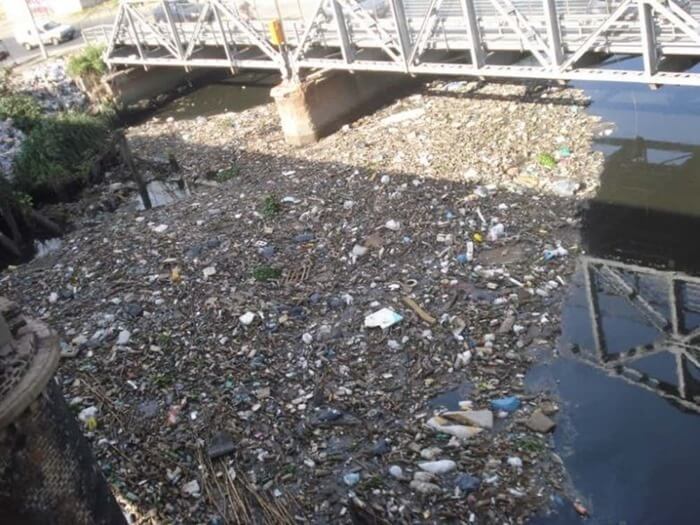 The name of this Argentine river is translated as "slaughter stream". It flows through Buenos Aires, the capital of Argentina and is used as a landfill for waste and sewage. Every day, chemical plants and factories dump an average of 82,000 cubic meters of industrial waste containing heavy metals and pesticides into Matanza Riachuelo. Citizens living in the slums of Buenos Aires and using river water suffer from a variety of skin diseases, respiratory diseases and gastrointestinal diseases so serious that they can lead to death. In 2005, the Argentine Minister of the Environment, Maria Julia Alsogaray, promised to purify Matança within 1,000 days, adding that she would be the first to drink purified water. And she did not fulfill any of these promises.
The name of this Argentine river is translated as "slaughter stream". It flows through Buenos Aires, the capital of Argentina and is used as a landfill for waste and sewage. Every day, chemical plants and factories dump an average of 82,000 cubic meters of industrial waste containing heavy metals and pesticides into Matanza Riachuelo. Citizens living in the slums of Buenos Aires and using river water suffer from a variety of skin diseases, respiratory diseases and gastrointestinal diseases so serious that they can lead to death. In 2005, the Argentine Minister of the Environment, Maria Julia Alsogaray, promised to purify Matança within 1,000 days, adding that she would be the first to drink purified water. And she did not fulfill any of these promises.
1. Jacuzzi of death (despair)
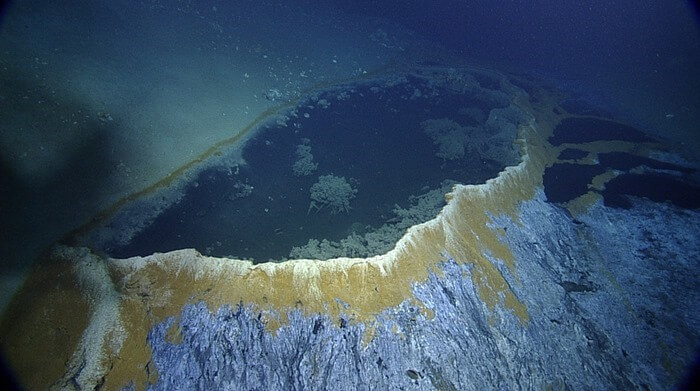 In the first place in the ranking of the deadliest lakes in the world is an underwater lake, whose name sounds like a low-grade horror film. It is located 1000 meters under water, at the bottom of the Gulf of Mexico.
In the first place in the ranking of the deadliest lakes in the world is an underwater lake, whose name sounds like a low-grade horror film. It is located 1000 meters under water, at the bottom of the Gulf of Mexico.
The Jacuzzi of Despair was created by leaching salt from the seabed. The salt made the water in one area very salty until it became so dense that it could no longer mix with the surrounding seawater.
The lake is shaped like a pool that rises 3.7 meters above the ocean floor. Its water temperature is about 18 degrees Celsius, while the surrounding sea water is much colder - only 4 degrees. Heat attracts sea inhabitants to the "pool". However, due to the huge amount of salt and methane, the water in the Jacuzzi of Despair is extremely toxic to most living things.
But there are microorganisms that have managed to adapt even to such terrible conditions of existence.Scientists believe that these creatures may resemble life forms that thrive on other planets.

